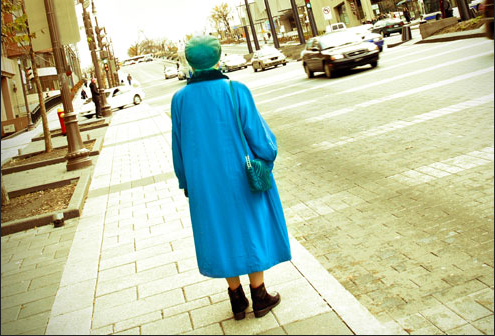by Kim Keller
“Most of the time I forgot I had Alzheimer’s in the earliest days until I realized one morning that I could not visually map out in my mind where I was supposed to go that day, and it was a place I frequented. Since that day I do not leave the house by myself . . . never. To not be able to create a map in your mind is so scary.”
These are the words of a former professor of engineering and member of an early-stage AD support group. Not being able to find your way, especially in places that have always been familiar to you, must be terrifying. And it’s hard to imagine the ever-present fear that a caregiver in that situation must endure: the possibility that a loved one might wander away and become lost is absolutely chilling.
What many people don’t realize is that this issue is not just about memory impairment. Though it’s certainly part of the problem, many people with dementia also suffer from what’s called “motion blindness,” meaning that their perception is faulty, making it difficult to process the visual cues that healthy people take for granted, the ones that indicate motion and help you find your way. For example, if you’re driving down the road, you can easily detect that you are moving while the houses around you are not. However, if you can’t actually perceive motion – as is the case in motion blindness – you become easily disoriented.
Gerald Flaherty, co-author of Dementia and Wandering Behavior, who kindly provided information for this article, said that “three out of five patients will wander and become lost at some point in the course of their Alzheimer’s disease [and] roughly three of four patients are repeat wanderers.” Wandering, he said, is “life threatening [because] at least a third will die when missing for over 24 hours.”
Clearly, wandering is a critical concern that requires having a counterstrategy in place. Naturally, the Alzheimer’s Association (AA) has lots of practical suggestions as well as a couple of important services.
First, they detail the clues you should watch for regarding behaviors that might signal a potential risk, such as if your loved one seems disoriented getting around their own home, like if they can’t seem to find the bathroom or kitchen or any other familiar spot, or if they want to “go home” but are already there.
Second, the AA recommends lots of simple actions you can take now, including creating a daily routine, installing locks that are out of the line of sight on all door and windows, alerting neighbors to keep their eyes peeled for your loved one walking around alone, as well as making sure your loved one always has ID with them and keeping a current photo handy in case a search becomes necessary.
Third, they offer two services worth considering:
1. The Alzheimer’s Association has collaborated with MedicAlert to create a program called “MedicAlert + Alzheimer’s Association Safe Return” which provides a bracelet or pendant for the AD person to wear at all times. The jewelry is inscribed with the words “memory impaired” and an emergency hotline number that operates 24/7, as well as any critical medical information. So if a loved one goes missing, you can call the emergency number and immediately set in motion a search by law enforcement and personnel from the local Alzheimer’s Association. The emergency hotline operators also have full access to all pertinent medical information.
The registration is simple and can be done online. The cost, as of this writing, is $55 for the first year, with a $35 renewal fee each year thereafter, plus a $7 shipping fee for the bracelet or pendant.
2. “Comfort Zone” is a GPS tracking service linked to your family’s home computer that monitors your loved one’s whereabouts at all times. The information can also be delivered through text messages. This service is $42.99 per month, with a $45 activation fee. This monthly plan also comes with the MedicAlert + Alzheimer’s Association Safe Return package mentioned above. There may be an additional fee for shipping and handling of the jewelry.
There is a lower-priced option called “Comfort Zone Check-In” which provides one scheduled GPS check-in per day, or you can purchase as many individual GPS check-ins per month as needed.
As people become more aware of the risks and dangers of people with dementia wandering off and becoming lost, it has prompted many states to create “Silver Alerts,” intended to work in the same manner as “Amber Alerts” for missing children. Silver Alerts help to spread the word that a mentally incapacitated individual has wandered away from home or a facility, getting the information quickly to law enforcement, media outlets and civic-minded citizens. It’s an organized way to put the search into high gear. Hopefully, all states will recognize the benefits of this type of program and join in.
Awareness is the key to help battle this dangerous aspect of Alzheimer’s disease. If you don’t have a strategy in place for wandering, take some time to create one now. You can start with the applicable Alzheimer’s Association page here to learn more about minimizing the risk of losing a loved one.
Kim Keller is the Co-Founder of In Care of Dad. She lives and works in New York City.
Photo courtesy of the Alzheimer’s Care Resource Center.







We’re devoting a lot of attention to this issue. And, we’re focusing on going the next step–where dangerous wandering can happen in the back yard, on a very cold night, when a standard tracker will show that your safe at home. (same for high heat, and falling).
Just realized I forgot to say who “we” are: Alz.care